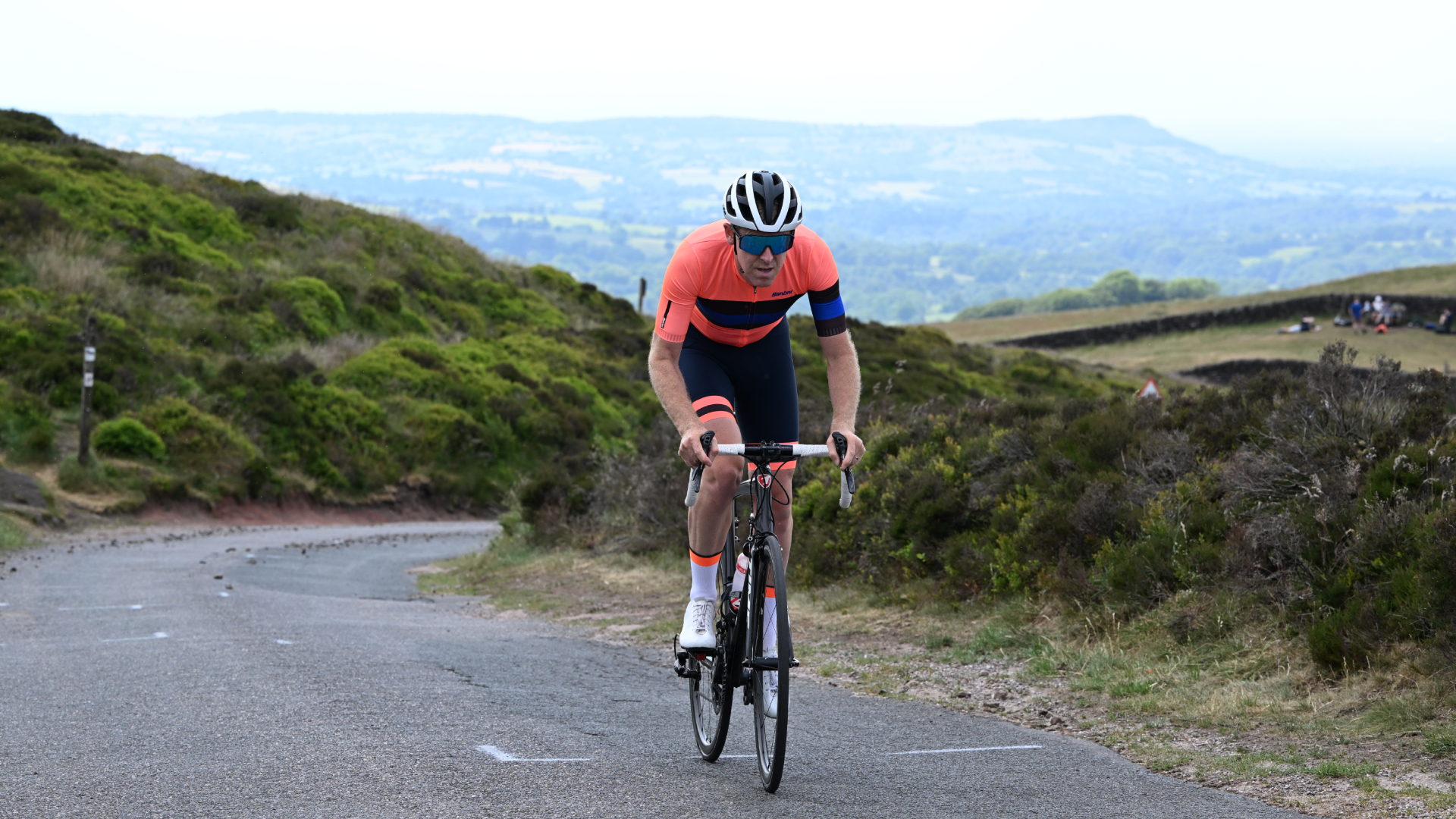Why cycling at middle intensities matters - the gains neglected by HIIT and polarized training
It's easy to understand the benefits of hard sessions and recovery rides offer, but what good does a tempo session really do?


You may have heard about polarized training – how training ~80% of the time at low intensities and 20% of the time at very high intensities is the ‘optimal’ training intensity distribution. If this is the case, then it follows that there is little benefit to training in that ‘grey’ zone between easy and very hard. However, in reality, things aren’t as clear-cut as this...
What is Training Intensity Distribution?
Training Intensity Distribution (TID) is simply a way to describe or quantify how much training time we spend at different intensities. At first glance, it sounds nice and simple, but it quickly becomes quite complex.
Firstly, we must decide how many zones we are going to use. Are we going to use three zones,four zones, five zones, or even nine zones? Typically, in the scientific literature, three zones are used; the reason being that these equate to intensities below the 1st physiological threshold, between the 1st and 2nd thresholds and above the 2nd threshold. The idea is that because the physiological responses across the range of intensities that correspond to a zone are similar the resultant adaptations will also be similar.
This is a great model until you realise that how we measure those thresholds is the subject of around 50 years of controversy in sports science. Change how the thresholds are measured and suddenly a lot of your zone 1 work might be re-classified into zone 2 or vice versa. The second problem is whether we use power output, heart rate or how hard it feels (RPE) to quantify intensity. All three are valid methods – but if you were to quantify the exact same cycling training plan using each method you would get very different results. Thirdly, we don’t all respond in the same way to training in each cycling training zone. Some riders respond really well to high-intensity work whereas others respond better to more volume.
Types of Training Intensity Distribution

Polarized training - 80:0:20
This TID has become increasingly popular in recent times. Doing a lot of easy work and some hard work has arguably become the de-facto model of TID. However, this view is starting to be challenged. Whenever we think of polarized TID we should be aware that the original concept didn’t use power output or even heart rate to quantify training. It used RPE.
The original concept said that in each 10-day block there should be eight low-intensity and two hard sessions. It never specifically mentioned the intensity at which the ‘hard’ work should take place.
Get The Leadout Newsletter
The latest race content, interviews, features, reviews and expert buying guides, direct to your inbox!
Pyramidical 70:20:10
The pyramidical TID shares some similarities with the polarized approach in that there is still a lot of low-intensity work. However, there is also some medium-intensity work. If I were to quantify the training of most of the professional road cyclists I work with, then their training would fall into this category. A lot of low-intensity, some medium-intensity (a lot of this is accumulated in races) and some high-intensity work.
Threshold 30:50:20
The theory behind a threshold TID is that you can ride for prolonged periods at medium-high intensities (what we might now call sweet spot efforts) and therefore you can accumulate a lot of training stress in one session. Theoretically, at least, this might give the biggest stimulus. The danger of type of training is that it can miss the very high-intensity efforts you often need in races, and it can quickly become very fatiguing.
HIT 0:0:100
There is, believe it or not, a lot of evidence to suggest that only doing high-intensity work is beneficial to improve form. However, the caveat here is this likely only works in the short term. Over a longer period, you simply need that high training volume if you are to reach your potential as an endurance athlete.
Why are there so many different approaches to Training Intensity Distribution?

Most of the research on TID (apart from HIT) has been done on professional endurance athletes. Those athletes sometimes train for more than 1000 hours a year. Clearly, if you are riding that much, you need to do a lot of that riding at easy intensities; otherwise, you would just burn yourself out. This probably explains why most athletes either follow a polarized or a pyramidical approach. However, when you haven’t got 25 hours a week to train you probably shouldn’t try and replicate the approach the pros use.
The verdict
A good way to think about training intensities is like tools in a toolbox. All tools are useful in the right circumstances, some are just more specialist than others. For most of us, we are trying to balance achieving as much fitness on the bike as possible while still holding down a busy job and having a fulfilling family and social life.
My advice, when planning your training, is to use all the tools at your disposal. Figure out what intensity of training you respond well to, this might not be the same at all times of the year or when working towards different goals. Once you know roughly what works you can play around, if you find yourself with more time than normal move towards a polarized distribution by increasing the easy volume.
If you find yourself with less time move towards a HIT distribution without any volume at all. You don’t have to do the same thing the entire time. Finally, it’s important to recognise that while I presented the types of TID as four distinct models but, they are all on a spectrum. 80:0:20 might not work well for you but 70:15:15 might just well be perfect.
So, is training in zone 3 useless? Not at all. It’s one tool you can use. Use it at the right time and it may be the best thing you ever did in your training, use it at the wrong time and it might not work at all.

Thank you for reading 20 articles this month* Join now for unlimited access
Enjoy your first month for just £1 / $1 / €1
*Read 5 free articles per month without a subscription

Join now for unlimited access
Try first month for just £1 / $1 / €1
James Spragg is a sports scientist and coach, working both in research and applied settings. When not working with athletes James can be found skiing, climbing, cycling or drinking coffee!
Alongside Dan Lorang and Peter Leo, James runs Intercept Performance Consultancy. Over the last 8 years in various roles, as coaches, performance consultants, performance managers, and sports scientists, Dan, James and Peter have played a role in helping athletes achieve more than 10 World Championship titles, several Olympics medals (including a Gold and Silver Medal in Tokyo 2020) and several Top 5 results in some of the biggest sporting events on the planet (Tour de France, Olympics, World and European Championships). Our single focus is on improving performance in all settings.
-
 'It took everything' - Puck Pieterse outclimbs Demi Vollering to win La Flèche Wallonne
'It took everything' - Puck Pieterse outclimbs Demi Vollering to win La Flèche WallonneDutch 22-year-old shows Classics pedigree with first one-day victory
By Tom Davidson
-
 Tadej Pogačar flies to dominant victory at La Flèche Wallonne
Tadej Pogačar flies to dominant victory at La Flèche WallonneSlovenian takes second win at Belgian classic ahead of Kévin Vauquelin and Tom Pidcock
By Tom Thewlis